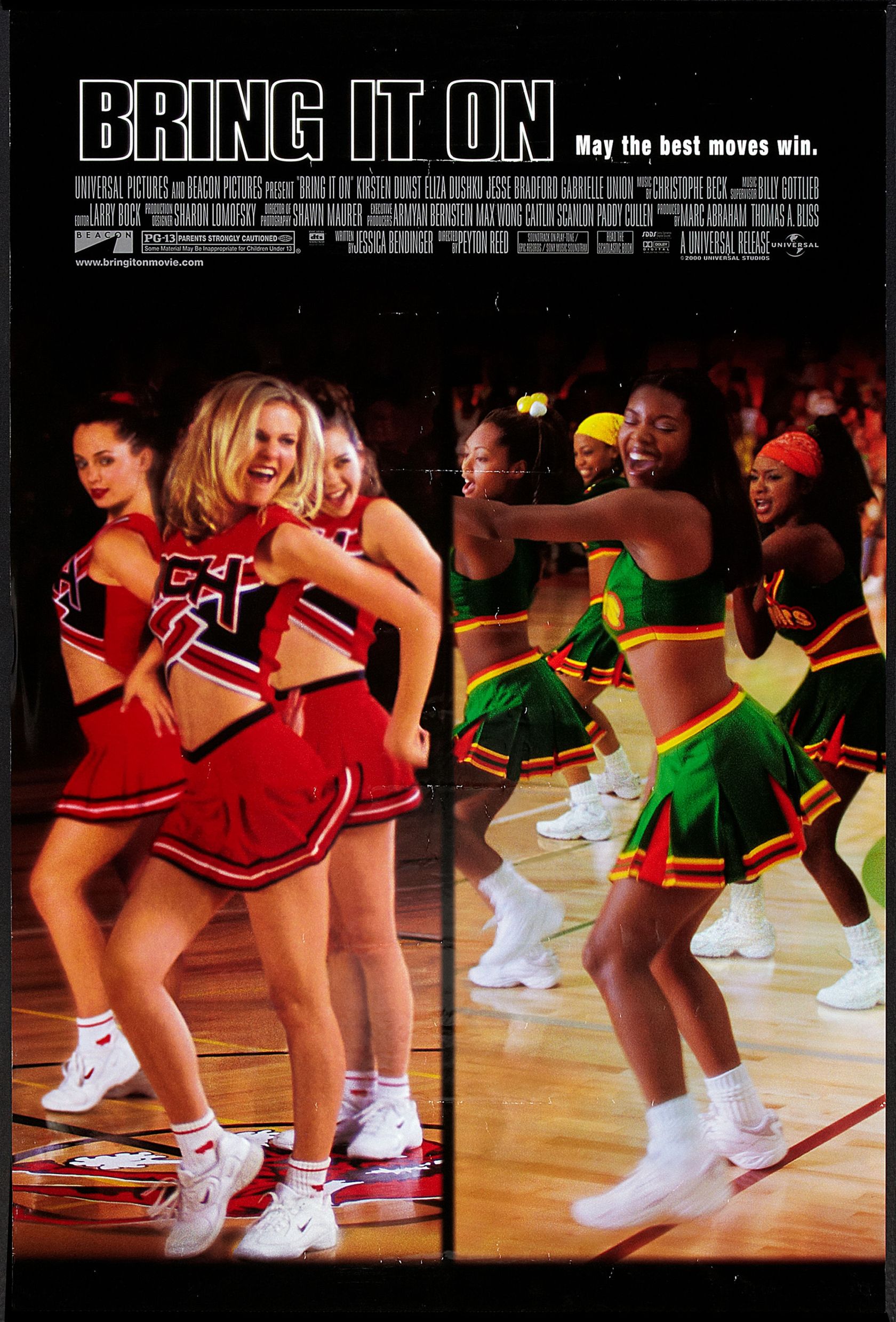
Source: Buyenlarge / Getty
Bring It On Was schooling all of us on one of today’s hot-button issues 16 years ago. Yes, it’s been that long since Bring It On came out.
Every now and then, I like to flip on a movie I used to love back in the day and curl up on the couch with a big bowl of popcorn. Sometimes, I even mix up a little rum and Vanilla coke for myself depending on the kind of mood I’m in. It’s a cozy way to spend an evening in.
Usually, watching the movie isn’t very intellectually taxing; it’s just fun to watch. However the last time, I watched Bring It On, a stunning realization smacked me in the face: This movie was about way more than pom-poms and spirit fingers.
This film about a White, suburban cheerleading team from California deftly exemplified how cultural appropriation should be confronted and handled once it has been called out for what it is.
I know. This sounds like a reach, but follow me on the this journey.
For anyone needing a refresher, Bring It On centered on Torrance, who had just been handed the reigns of her championship cheerleading team, The Rancho Carne Toros. Her squad had been killing competitions all over the place for as long as she was on the team because they had the best routines. What her predecessor failed to mention, though, was that she’d been stealing their moves from the Clovers, a Black cheerleading squad from East Compton, for years! Rude.
You see where I’m going with this one?
Torrance was confronted with this revelation when a new recruit named Missy called out the Toros for copying the Clovers. Outraged that anyone would suggest that the Toros’ routines were anything but original, Torrance quickly dismissed the accusation. That’s when Missy dragged her out to East Compton for the flyest pep rally you’ve ever seen during a movie, and Torrance saw the truth. The Clovers were doing the routine she knew by heart, and they were doing it waaay better.
There, in East Compton, Torrance discovered that the moves her team had won national championships with were nothing more than a cheap imitation of something that would otherwise be considered ghetto when performed by the originators.
And the Clovers did not waste time telling Torrance to stop ripping them off. They didn’t appreciate that their style was being appropriated by a White squad as if they came up with it. Just to drive the point home, the Clovers showed up at a Toros game and performed another one of their cheers in front of Torrance’s team and the fans and called them out again! Drop the spirit stick.
The previous captain, and Torrance’s current team, saw nothing wrong with copying the Clovers to get ahead. They didn’t care about the cultural implications of stealing a style that the Black girls would be disparaged for. All they knew was that jacking the Clovers’ routines was a winning formula for the Toros.
Sadly, this is often the response that people of color get when something that we created gets swiped by the mainstream culture.
All of a sudden, the very thing that we were mocked for is revolutionary, cutting-edge, and avante garde. When we were doing it, though, it was just ethnic–and, therefore, looked down upon. All of a sudden, something that many of us grew up with is a hot new trend, and re-labeled. For example, fashion magazines may call a new style Boxer Braids, but we know they’re just cornrows. All of a sudden, the history behind certain styles is swept under the rug and claimed as an original creation of the mainstream. However, we can reach back in the family photo albums and prove that these things have been around for decades!
Here’s where Bring It On starts to get it right on the approach to cultural appropriation.
Instead of ignoring the truth and just continuing to capitalize on stealing someone else’s style, Torrance insisted that her team come up with something more original. She was going to let the Clovers rock with what makes them great while forcing her team to work hard at developing something new and special of their own.
There was no temper tantrum about reverse discrimination. There were no flimsy arguments that art belongs to everyone, and no one can own a particular style of artistic expression. There wasn’t even any claim that the appropriation isn’t a form of racism. Torrance simply acknowledged where they got their inspiration from. Then she made her team step back so that Clovers could shine with what they’d worked hard to create for themselves, giving credit where credit was due.
Instead of doing things the easy way, The Toros actually had to put in some hard work because Torrance knew they were also capable of being originators. And they pulled it off! When they had to use their own creativity the Toros came up with a spectacular routine that impressed the judges at the biggest competition of the year.
Sadly, for the Toros, they still couldn’t beat the Clovers at Nationals. But at least the Clovers were finally being recognized for their talent, which had been years overdue for them. That’s not asking a lot, it’s insisting on what is fair.
Even more incredible, Torrance didn’t have to be shamed into doing what was right when she learned the truth. She made up her mind that what had been happening is wrong, and she immediately began working on solutions to fix the problem. It was someone from the mainstream that took it upon herself to do her part to correct a long-standing problem that further divides people.
The writers probably didn’t know that they were tackling such a prevalent issue that is still relevant today, but I think we can all appreciate a cleverly disguised lesson.
RELATED STORIES:
When Cultural Theft Is Mislabeled As Cultural Appropriation
YouTube Star Explains Cultural Appropriation & Gentrification While Making Us Laugh
Beyoncé Accused Of Cultural Appropriation In Coldplay Video
‘Bring It On’ Was Low-Key Ahead Of Its Time On The Cultural Appropriation Conversation was originally published on hellobeautiful.com















